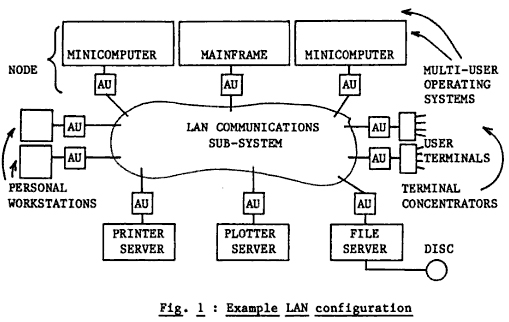Lan things

The main futurologist of Cisco Systems Dave Evans, in one of his predictions told about an interesting concept, the so-called. " Internet of Things ". In his opinion, this idea can be fully realized, since at present only 25% of the world's population has access to the global network, while the number of things that can be connected to the Internet already exceeds the population of the Earth in more than 5 time. Such a global “network of things” could serve the good of humanity.
LAN (Local Area Networks, local area network, LAN) at one time became a key step in the development of the Internet: instead of connecting everything through a global network and communicating with it, local networks combined only a few devices.
Usually one of the devices had a connection with the outside world. Local functionality was found to be convenient, and LANs became widespread. Thus, before we can build a useful “Internet of things”, we must learn to build a “LAN of things”.
In order to define “LAN of things”, it is worth considering what exactly made local networks useful. The definition of LAN, dated 1988, reads:
“A local area network, a LAN, is a communication and storage system built from blocks that can be added or changed their location as needed. They combine operations for the transfer, storage and processing of information to serve specific user applications. "
Some aspects of this definition are quite suitable for describing the current state of the concept of “omnipresent computing” and “Internet of things”.
- Devices as "building blocks", performing specific functions. Printers, tape drives and modems performed specific functions at the dawn of the LAN.
- "They combine operations for the transfer, storage and processing of information." In other words, each device works autonomously, but it is the combination of devices that is most important.
- Components "can be added or changed their location ... to serve specific user applications." This means that not all LANs have the same components, are built as necessary, and are not determined entirely in advance.
')
In the 80s, the use of such a mechanism was a necessity: the devices had to be specialized, since universal devices that combine different functions in one node were very expensive.
Nowadays, we don’t have to worry about creating specialized devices to reduce the cost of data processing. However, functional specialization still remains valuable and useful in helping people.
The concept of “useful on its own - even more useful in the aggregate” is one of the concepts of the “omnipresent computing” technology underlying the “Internet of things”. It is worth thinking about the benefits of local applications of disparate individual technologies that surround us.
- What can be done with a few things equipped with RFID in our house?
- What useful service can you create with two light switches in the house that transmit data about your own conditions?
- What useful information can I tell if I constantly carry a motion sensor on myself?
Small-scale benefits are the heart of the “LAN of things.” If we succeed in identifying narrow, but extremely valuable applications of distributed information processing, we will be able to start creating islands of useful applications in practice, and assess the effect of network value. One example is the identification of pets using RFID. It is used not for the first year, and in the future people will understand that their pets have become part of the “Internet of things” a decade before them. Our pets are very valuable for us and it is important for us to know that they are doing well. Cars have machine readable VIN numbers. Since there are good financial reasons to track them with ease.
How can we use existing LAN things (cars, pets, bar codes) and build network services based on them? This is one of the issues that people will work on in the near future. And we will see where all this will lead.
via Orangecone
Source: https://habr.com/ru/post/106596/
All Articles